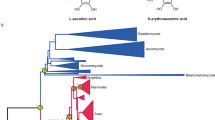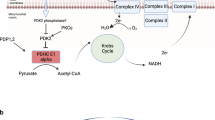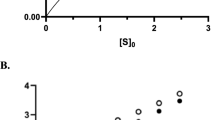Abstract
HOMOGENATES of rats' livers, and aqueous extracts of acetone powders of rats' livers, have been found to convert riboflavin into a flavin chromatographically different from riboflavin, flavin mononucleotide, and flavin adenine dinucleotide. The amount formed increases with time, and the conversion is accelerated by rise in temperature, but does not occur after heating at 100° C. The reaction is therefore thought to be enzymic. The flavin cannot be detected in unincubated homogenates which have been concentrated many times by Crammer's1 method for extracting flavins.
This is a preview of subscription content, access via your institution
Access options
Subscribe to this journal
Receive 51 print issues and online access
$199.00 per year
only $3.90 per issue
Buy this article
- Purchase on Springer Link
- Instant access to full article PDF
Prices may be subject to local taxes which are calculated during checkout
Similar content being viewed by others
References
Crammer, J. L., Nature, 161, 349 (1948).
Warburg, O., and Christian, W., Biochem. Z., 298, 150 (1938).
Emmerie, A., Rec. Trav. chim., 58, 290 (1939). Bessey, O. A., Lowry, O. H., and Love, R. H., J. Biol. Chem., 180, 755 (1949).
Sanadi, D. R., and Huennekens, F. M., 117th Meeting of the American Chemical Society, Abstracts of Papers, P. 60c (1950).
Pallares, E. S., and Garza, H. M., Arch. Biochem., 22, 63 (1949).
Author information
Authors and Affiliations
Rights and permissions
About this article
Cite this article
WHITBY, L. Enzymic Formation of a New Riboflavin Derivative. Nature 166, 479–480 (1950). https://doi.org/10.1038/166479b0
Issue Date:
DOI: https://doi.org/10.1038/166479b0
This article is cited by
-
Die Biosynthese des Riboflavins bei Candida Guilliermondii (A. Cast) Langeron und Guerra und einigen verwandten Arten
Archiv f�r Mikrobiologie (1957)
-
Flavin nucleotides and flavoproteins
Experientia (1956)
Comments
By submitting a comment you agree to abide by our Terms and Community Guidelines. If you find something abusive or that does not comply with our terms or guidelines please flag it as inappropriate.



